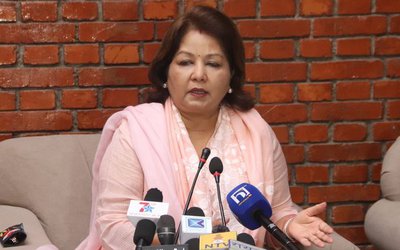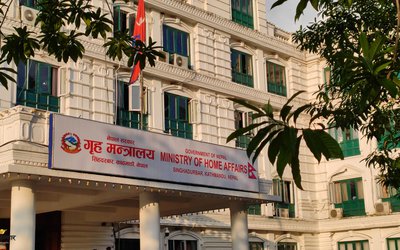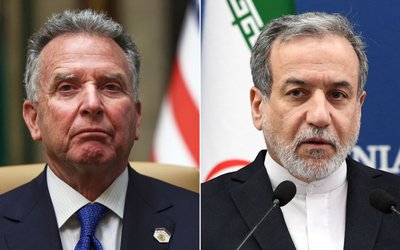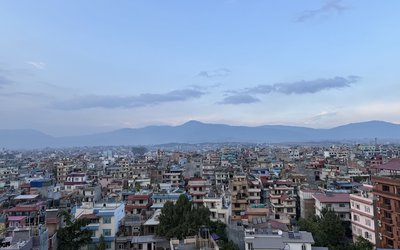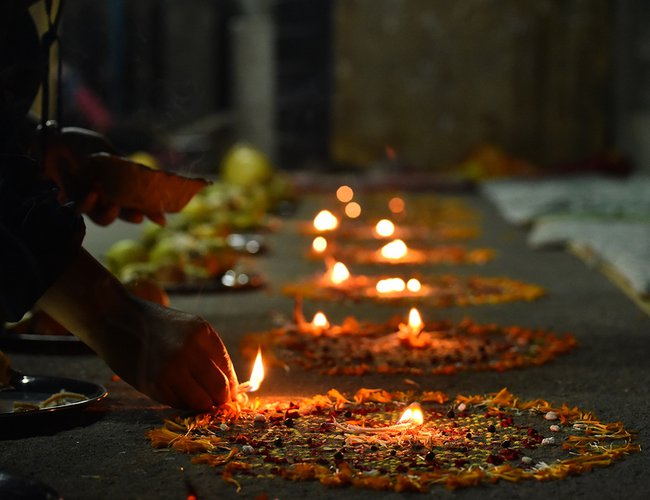
The New Year’s Day of Nepal Samvat (Kartika Sukla Pratipada) coincides with a family celebration among the Newars, both Buddhist and Hindu, known as mha puja (literally, body-worship or self-worship). Although the puja is evidently inspired by the puranas and tantras, it is a unique Newar festival, quite different both in form and content from the Hindu festival of Govardhan Puja.. commonly observed by the non-Newars in Nepal.
On this day, all the members of a Newar family sit in a row, each member facing a fully decorated mandala (geometric circle). Irrespective of age or sex, all the family members are worshipped in turn by the eldest woman of the family The mandala is a series of concentric circles, each drawn in turn by water, oil, rice, paddy, and yellow and red powders.
At the centre of each circle, a compact group of five circle in drawn, each covered by paddy and rice, decorated with flowers and ritual thread, known as jajamka. The inmates of the family are each offered a burning oil-fed wick known as khelu-ita. Originally, it measured equal to the length (dhul) of a human face (khe). Finally, the auspicious sagun is offered, consisting of whole boiled-and-fried egg, accompanied by other makaras--matsya (fish), masa (meat), madya (wine), fried ginger (mudra) and bean cake (maithuna).. The eldest woman of the family wishes each member of the family a long life-a wish symbolized by the offer of a present consisting of walnuts, jackfruit, common citron, and above all gwae swan, the long-lasting nut-shaped velvety flower.
Mha Puja is based on the religious belief that the soul or self is most important in the world and that if the soul is satisfied, the gods are also satisfied and one’s life becomes meaningful and prosperous. Nepal Sambat, an indigenous calendar of Nepal also begins today.
Nepal Sambat was launched by Shankhadhar Sakhwa by relieving the people of Nepal off debt during the rule of Lichchhavi King Raghavdev.
Recognizing the contribution of Shankhadhar Sakhwa to the country and people, the government led by the then Prime Minister Krishna Prasad Bhattarai had announced Sakhwa a national luminary on November 18, 1999.
Magha Puja Day is also known as Sangha Day or Fourfold Assembly Day in most Buddhist countries, and is observed on the first full moon day of the month of Magh, which tends to fall in the Gregorian months of January or February. The day commemorates a time when 1,250 Buddhists spontaneously came together to pay their respect to the Buddha. The festival is in honor of the Sangha, or the Buddhist community and is a chance for people to reaffirm their commitment to Buddhism.
What Do People Do?
Many Buddhists around the world celebrate Magha Puja Day with gift exchanges, lighting of oil lamps, chanting, meditation, attending temple for special observances and participating in Buddhist activities. The spiritual aims of the day are to do only good things and to purify one’s mind. In the evening, each temple in Thailand holds a candle light procession while holding flowers and incenses. The monks and the congregation members circle the Uposatha Hall three times to represent the Three Jewels - the Buddha, the Dharma, and the Sangha.
The practice of the Five Precepts or the practice of renunciation is one of the activities that is observed on Magha Puja Day. This involves observing the Eight Precepts, the practice of meditation and mental discipline, going to temple, and wearing white robes for a number of days.
For some Buddhist communities, there may be a series of meetings to discuss various aspects of the teachings, periods of group meditation, talks given by senior members of the community (both resident and visiting) and a variety of other events - often quite spontaneous - over a period of several days.
Public Life
Magha Puja Day is a public holiday in Thailand, Laos and Cambodia so government offices and many businesses are closed. It is not a nationwide public holiday in countries such as Australia, Canada, the United Kingdom, and the United States but some cities may hold large celebrations for the occasion.
Background
Magha Puja Day commemorates the spontaneous assembly of 1,250 enlightened monks to hear the Buddha preach at Veluvana Vihara. The day is also called the Fourfold Assembly because it consisted of four fortunate factors that happened nine months after the Enlightenment of the Buddha:
There were 1,250 Sangha followers that spontaneously came to see the Buddha.
All of the followers were Arhantas - enlightened monks.
All of them were direct disciples having been ordained by the Buddha himself.
It was the full moon day of the Magha month (March).
The Buddha gave his first important sermon on this day - The Ovadhapatimokha - to cease from all evil, to do what is good, and to cleanse one’s mind - which laid down the principles of Buddhism. The Buddha also declared that he would pass away in three months, so some believe that the Buddha might have used this event to make this announcement.
Symbols
Sangha is the term used for the Buddhist spiritual community. Magha Puja is also referred to as Sangha day because it celebrates both the ideal of creating a spiritual community, and also the actual spiritual community which they are trying to create.
- Foreign Minister Dr. Deuba to head to Bangkok to chair UN Meeting
- Apr 20, 2025
- We Do, What We Say, The Government Will Not Be Afraid: RPP Leader Lingden
- Apr 20, 2025
- Home Ministry warns RPP: Action will be taken if it violates prohibited Areas
- Apr 20, 2025
- Weather Forecast: Partly To Generally Cloudy With Brief Rain In Kathmandu, Pokhara And Janakpur
- Apr 20, 2025
- Korean Embassy Hosts FRIENDS OF KOREA 2025 Event in Kathmandu
- Apr 19, 2025






